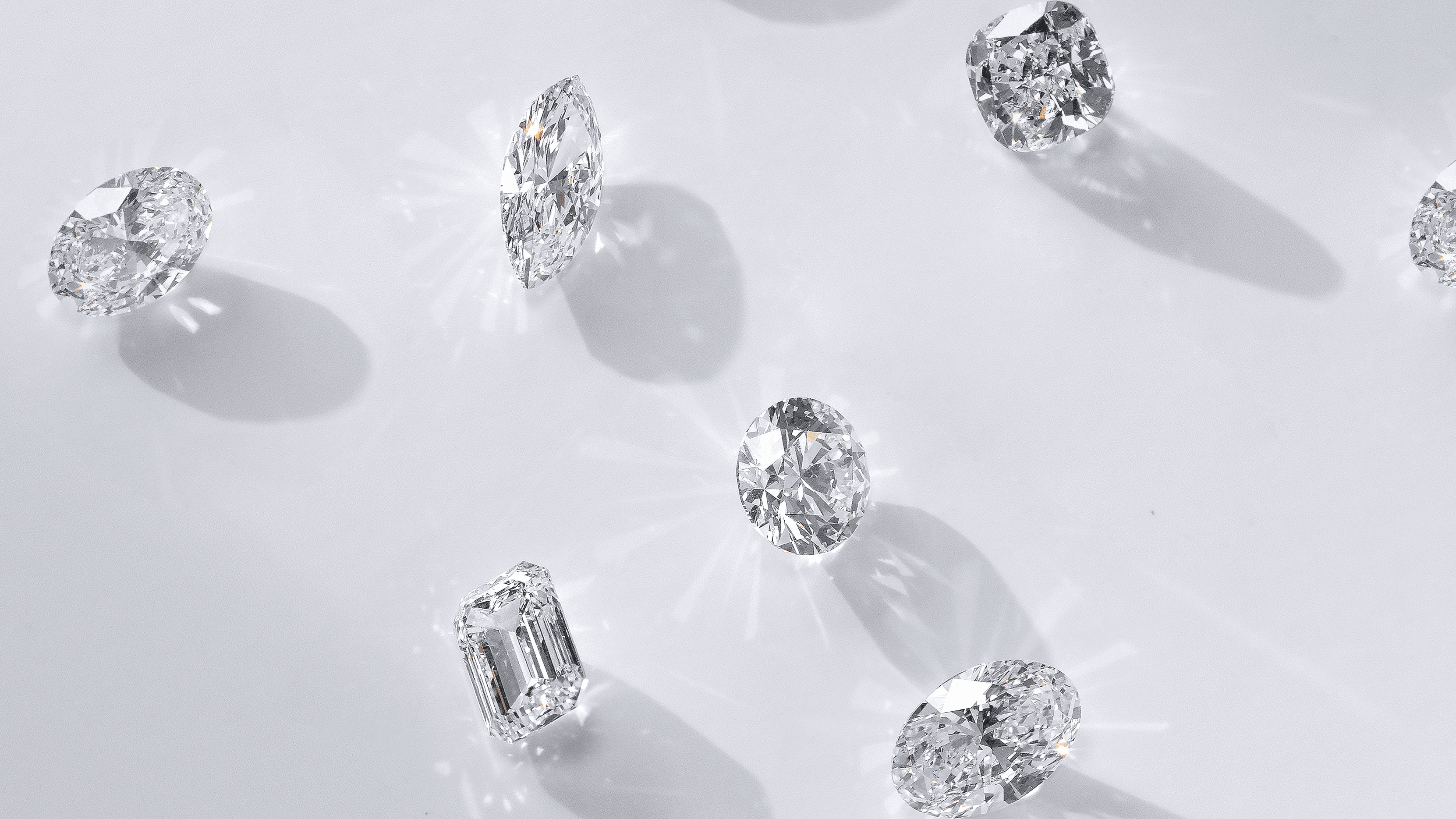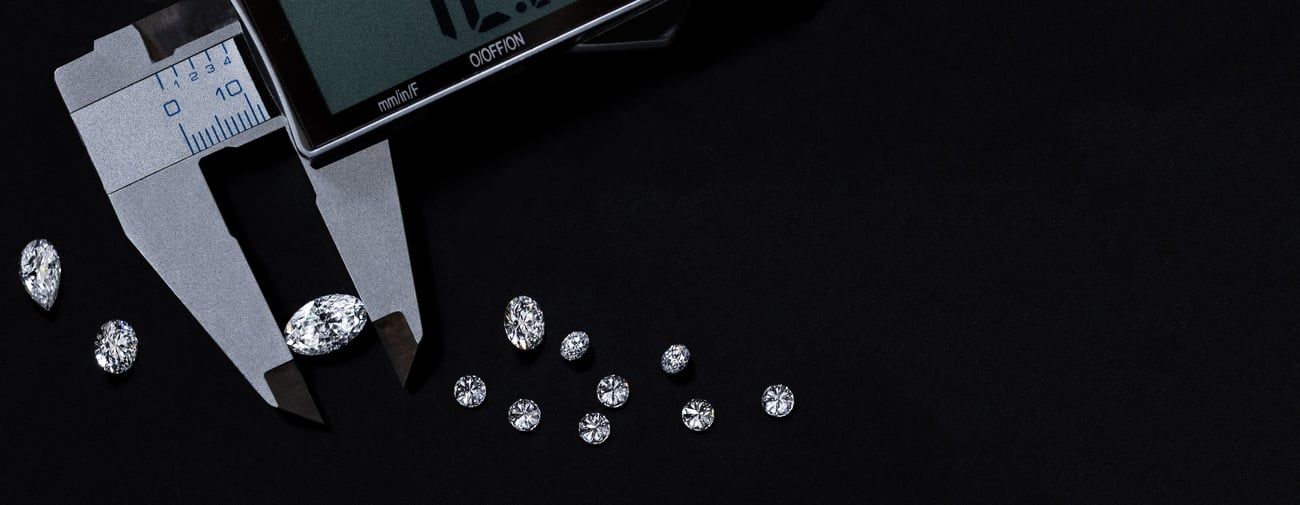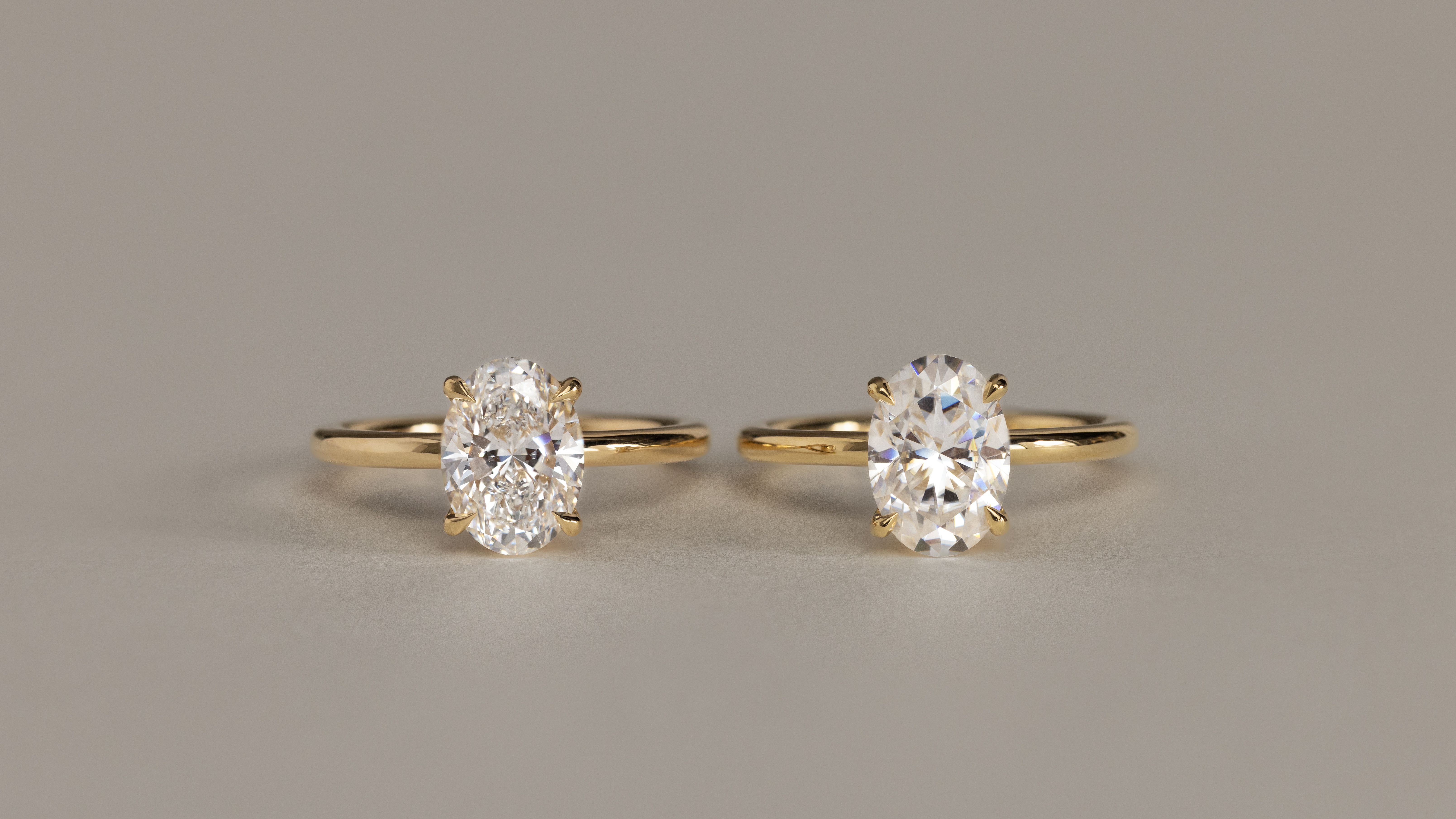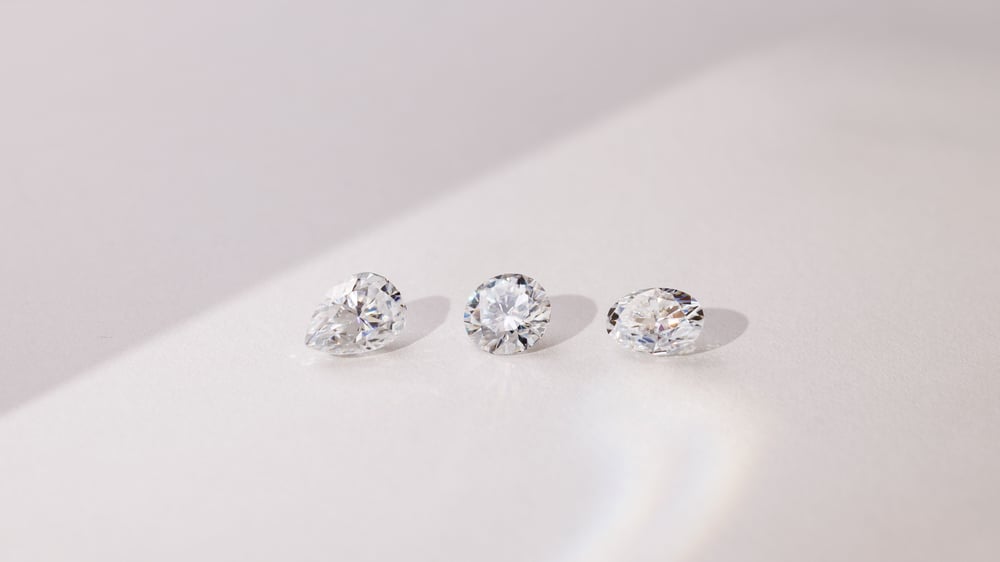
Whether your heart is already set on moissanite or you’re still figuring out whether moissanite is the stone for you, which moissanite is closest to a diamond is quite a common question. Moissanite is undoubtedly a beautiful and precious gem of its own, and many people fall in love with these extra sparkly, affordable, environmentally conscious stones. However, we do understand that many are after something that closely resembles a diamond, so we are here to help!
A good way to start is to explain that for most people, telling the difference between moissanite and diamond is possible with the naked eye once you know what to look for. If they are comparable sizes placed side by side, and you are in the know of the larger facets and more rainbow sparkle of a moissanite then you would be able to distinguish diamond from moissanite quite readily. However, there are small choices you can make in terms of shape, cut and size which can make a moissanite look even closer to a diamond.
The Shape of Your Stone
Due to the fact that diamonds can have endless variations in characteristics and quality, it can really be said that any high-quality moissanite may look somewhat like any particular diamond if their specifications match. Take any diamond and any moissanite however, and they will always be able to be differentiated with the naked eye once you know what to look for. When it comes to the shape of a moissanite and diamond, some shapes do tend to look closer than others. Of all shapes, round cut moissanite most closely resembles a diamond. Round cut stones have very specific facets and proportions, and round moissanite has been able to be cut in a way that causes light to interact with it in a similar way it does with diamond. This means that a round moissanite next to a round diamond will be very hard to differentiate, and is your best option for a diamond-like moissanite.
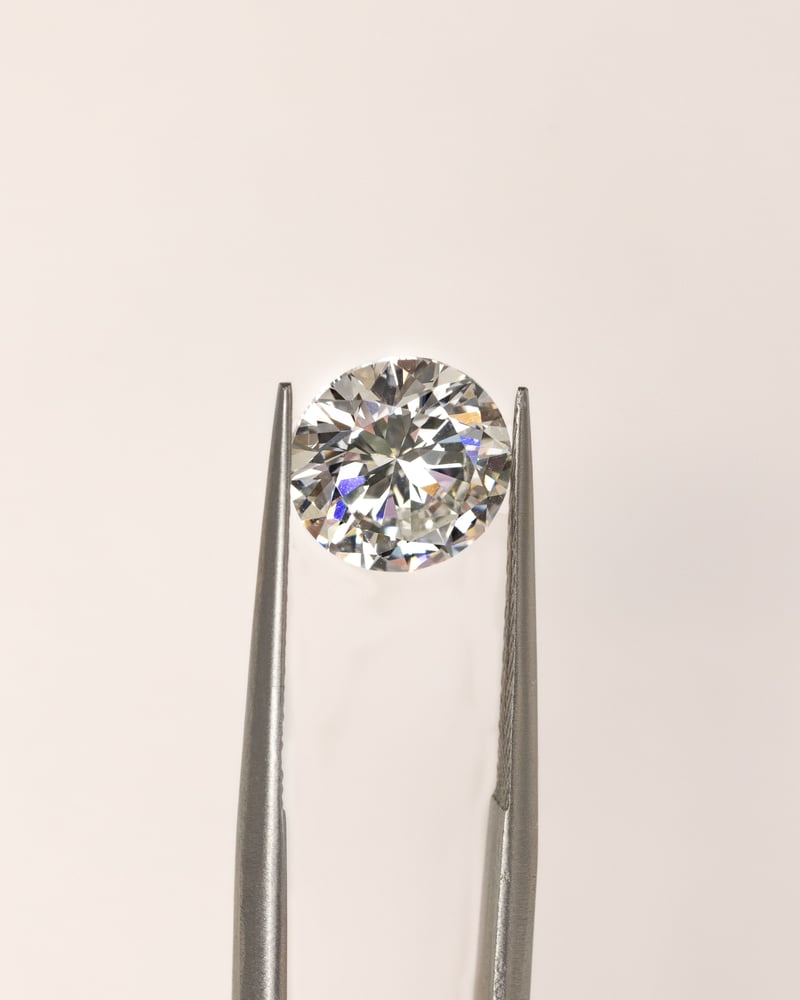
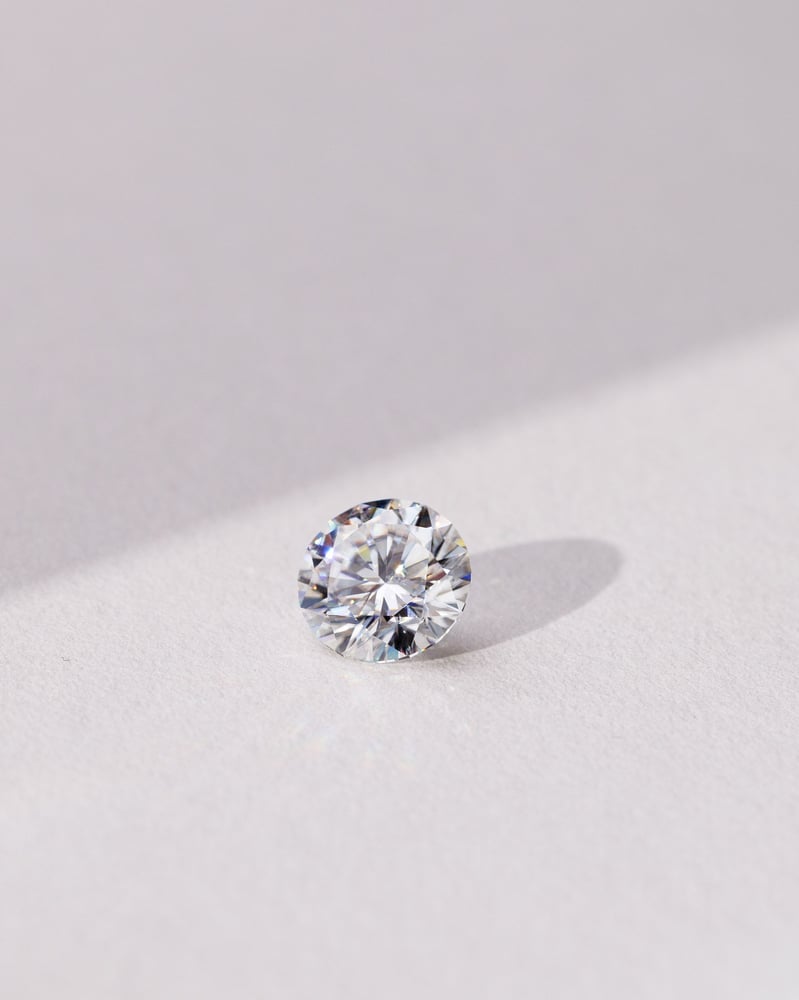
Step Cuts
Due to their very straight facets of uniform rectangles and triangles, these cuts are quite subtle in their sparkle, in either moissanite or diamond. This means that a step cut moissanite won’t display much more brilliance and sparkle than a diamond of the same shape, unlike what you may find in other cuts. At times, moissanite step cuts can lack a bit of depth compared to diamonds of the same shape, clarity and colour. However, given that our moissanite is all of VVS1-2 clarity and DEF colour, they are still an extremely beautiful and affordable option if a step cut stone has captured your heart.
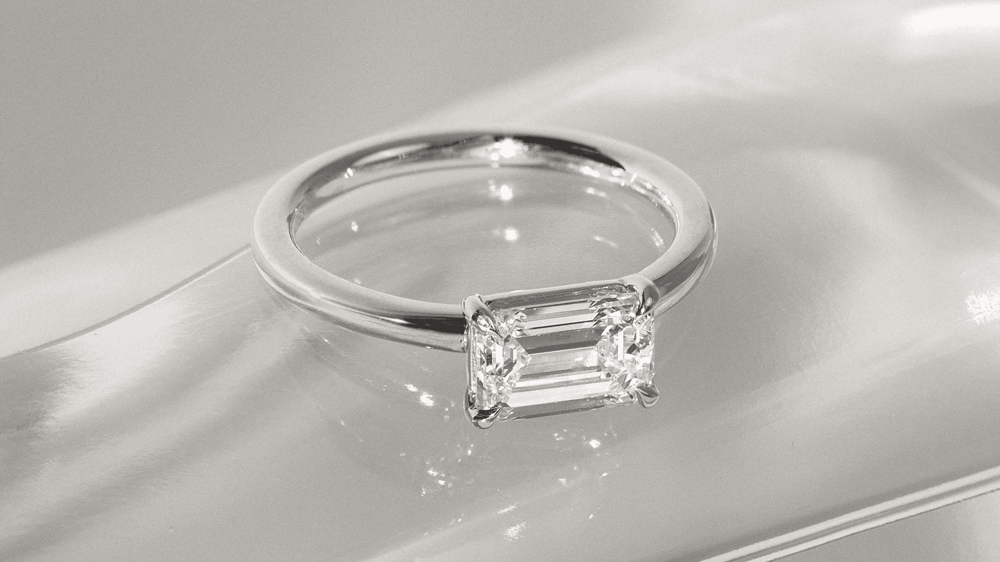
Elongated Cuts
To explain the characteristics of elongated cut gemstones such as ovals, pears, radiants and elongated cushions , it’s helpful to understand how light interacts with them. When light interacts with a gemstone, it enters the stone before bouncing off facets and exiting back to your eyes. In elongated cuts, diamonds will often portray a more irregular, scattered type of sparkling pattern, due to its different refractive index, contrasting with moissanite's wider, more spread out faceting pattern.
In general, brilliant elongated moissanite, although gorgeous in their own right, can look more distinguishable from a diamond, because they are able to keep that brilliant faceting pattern not seen in equivalent diamond shapes. If you were looking for something in these shapes closer to the appearance of a diamond, the crushed ice cut is a great option as it breaks up the light into the scattered sparkle that you see in elongated diamonds, and thus look similar to a diamond, making them a great option for a diamond-like moissanite.
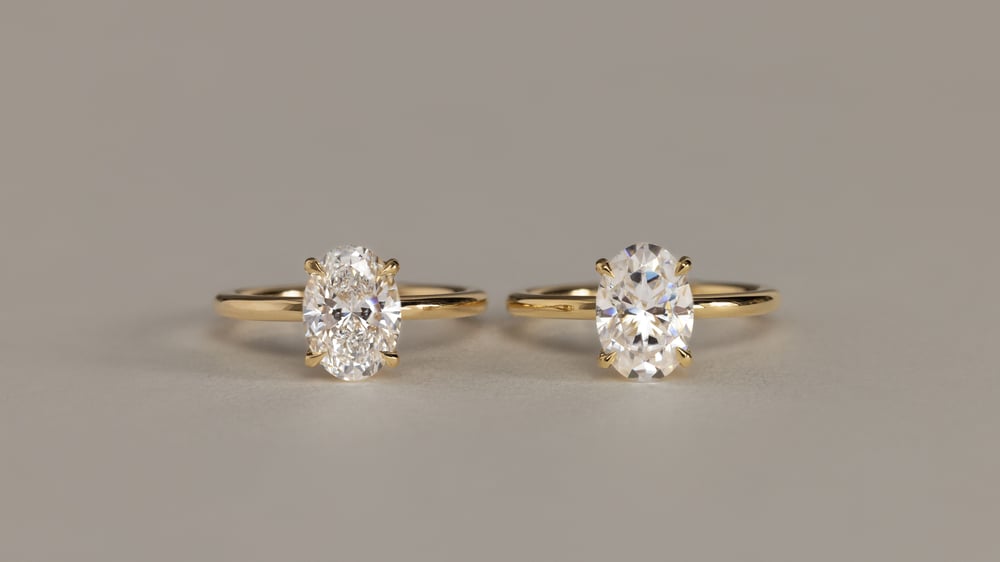
Does Size Affect a Moissanite Looking Like a Diamond?
To a certain extent, yes. As with diamond, the larger a moissanite stone, the more light will enter it, and therefore the more brilliance and fire it will display. Moissanite has a different refractive index than diamond, which means that it will exhibit a sparkle that has more of a rainbow appearance. This difference becomes more noticeable the larger the stone gets.
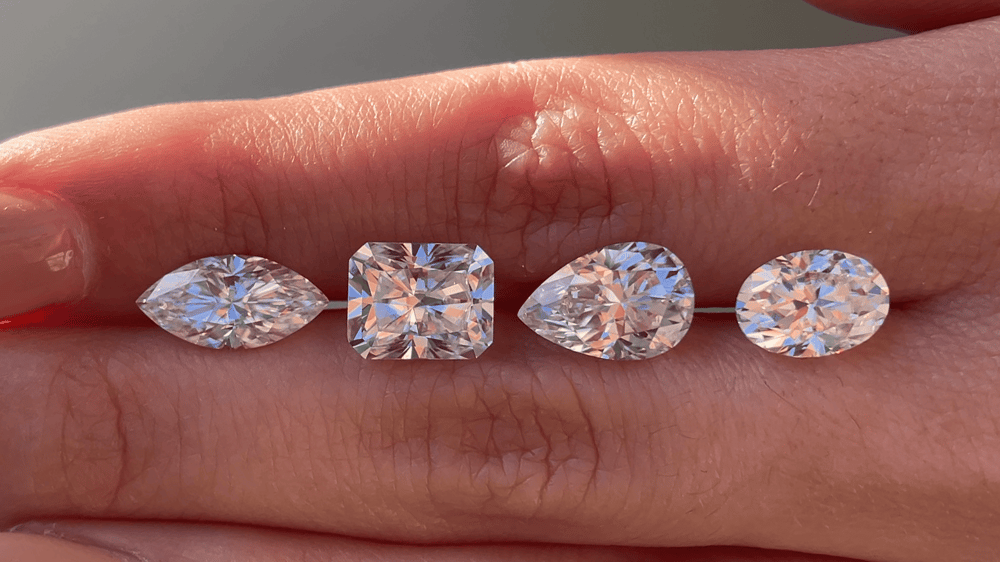
We believe the most important thing is that you love the look of your ring, regardless of the type of stone. Moissanite is beautiful gemstone in its own right, and many people love moissanite’s extra sparkle and the fact that they can get a larger stone at a more affordable price point. However, we definitely understand that you may want a stone that looks as close to a diamond as possible, and there are definitely options available to make that happen.
